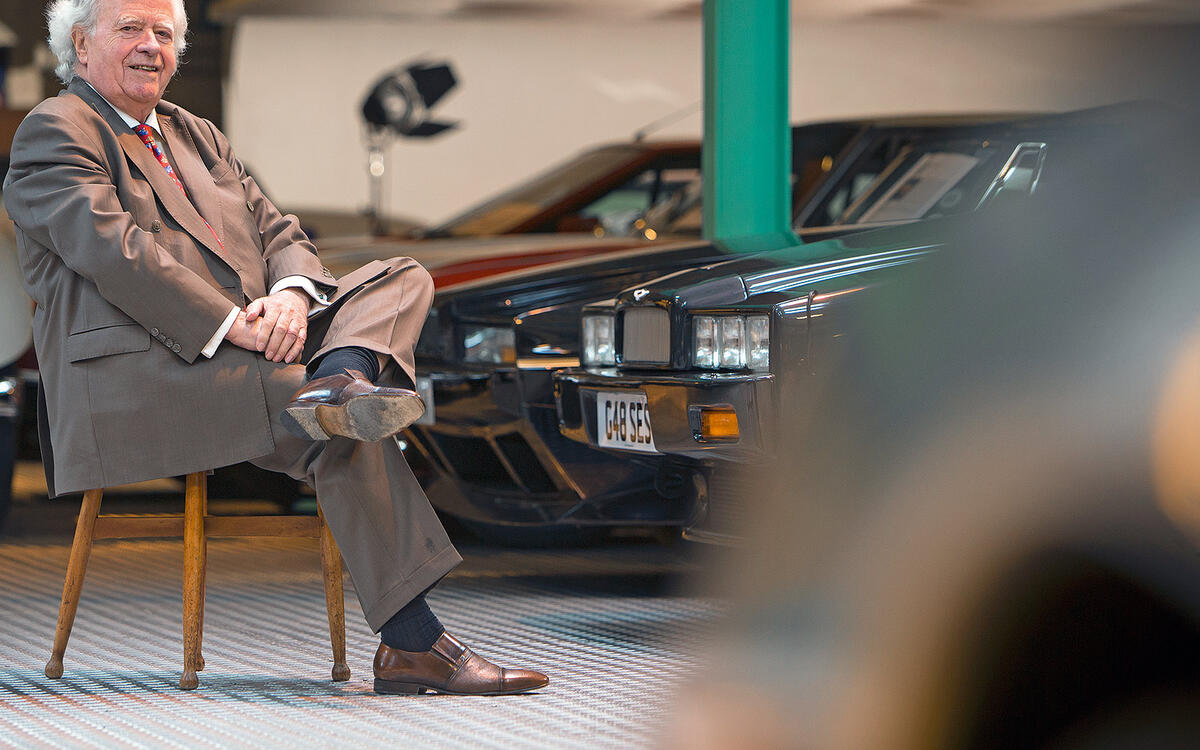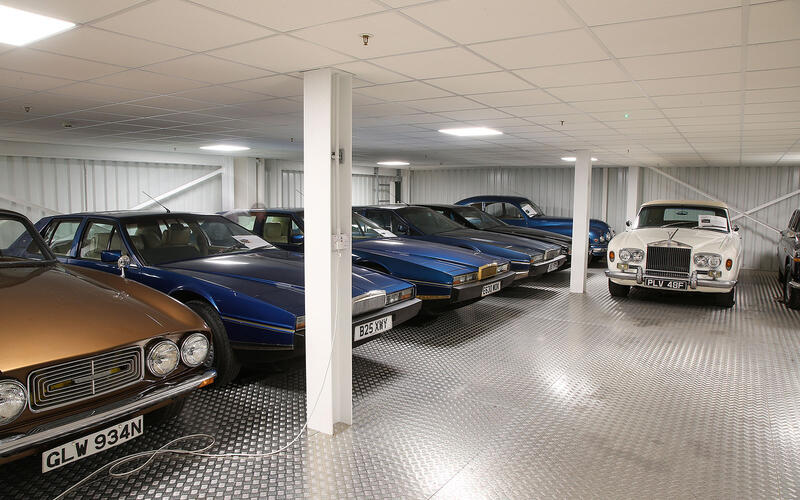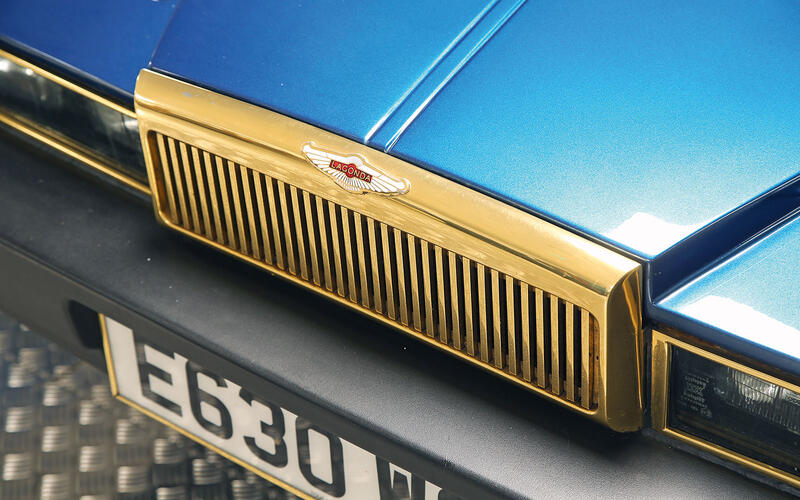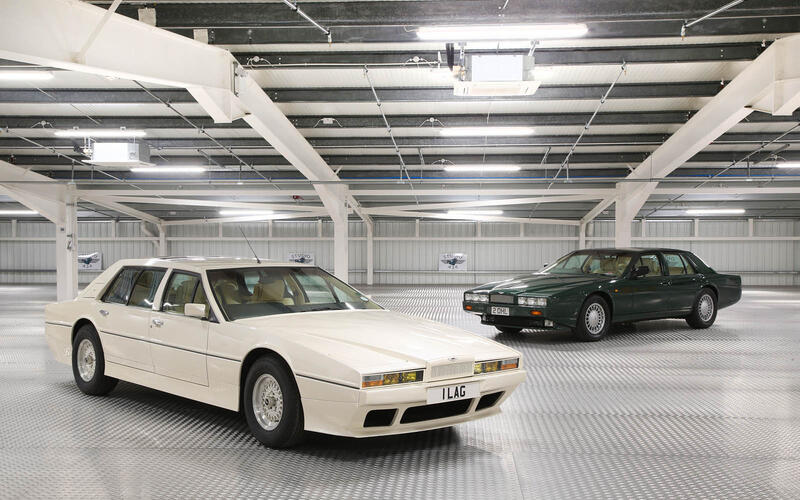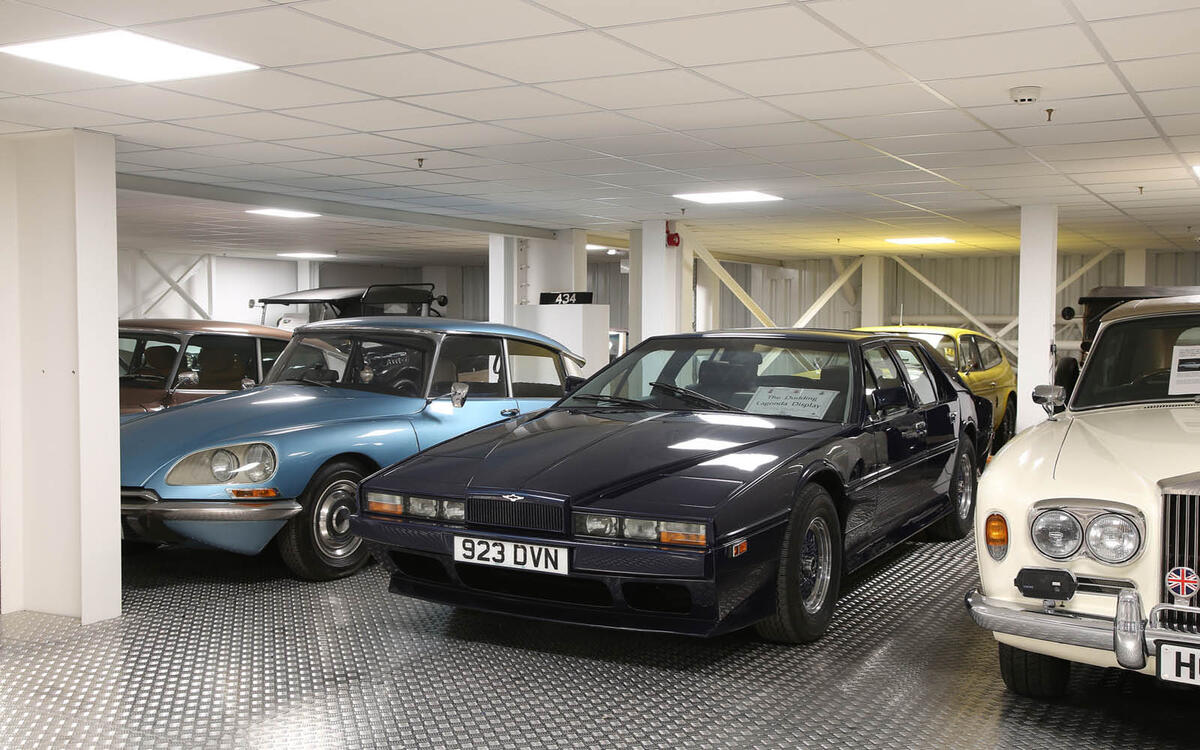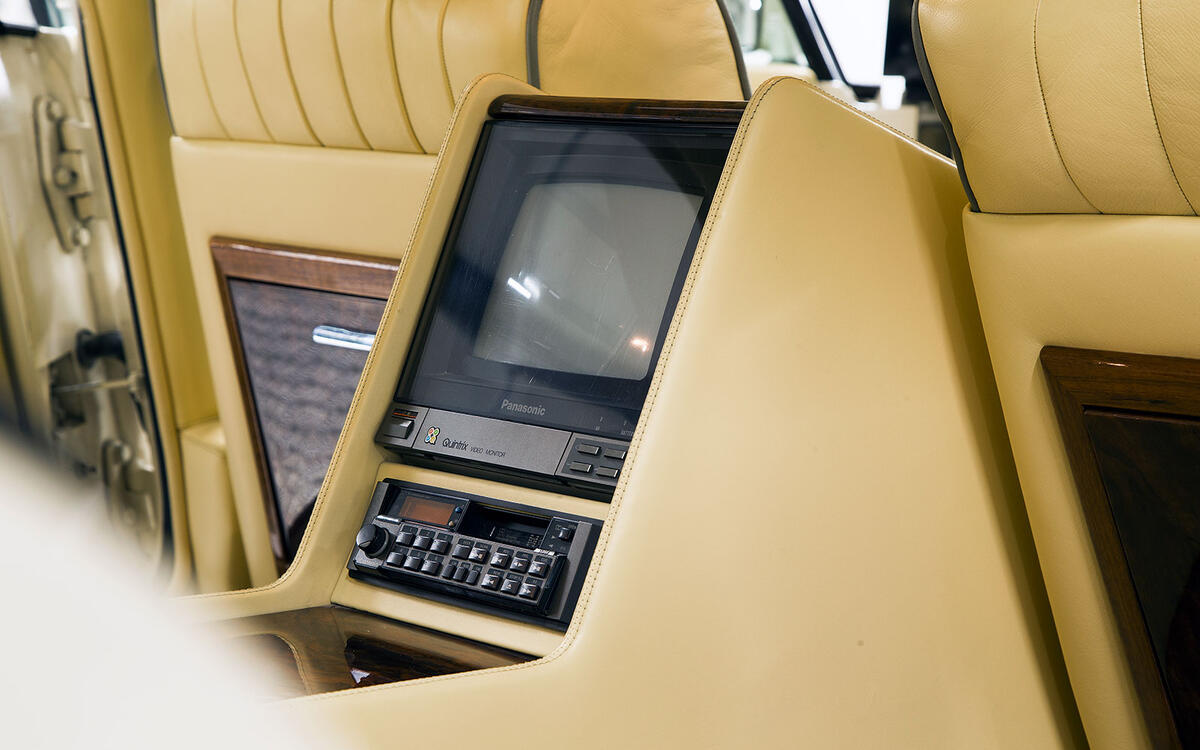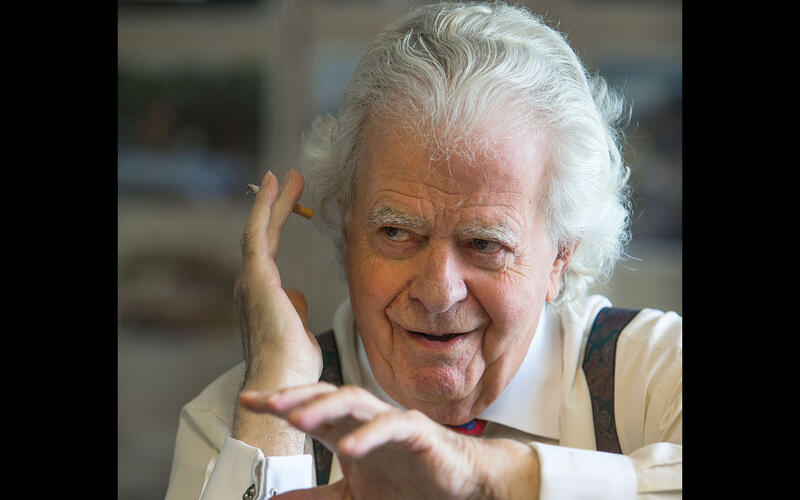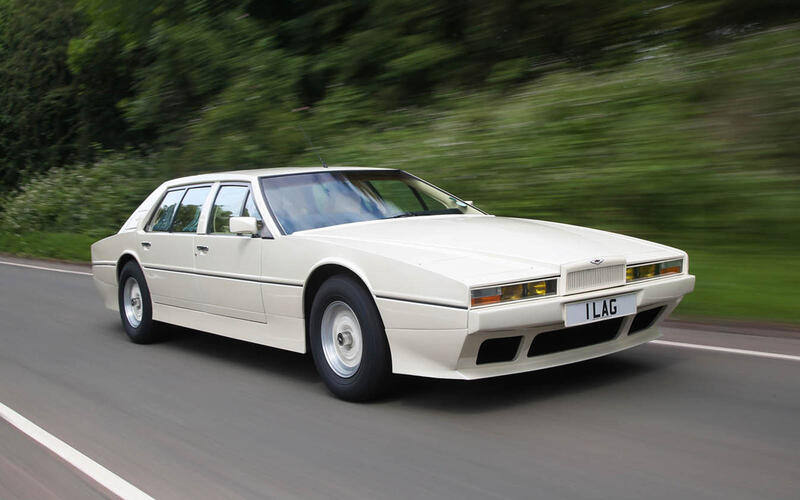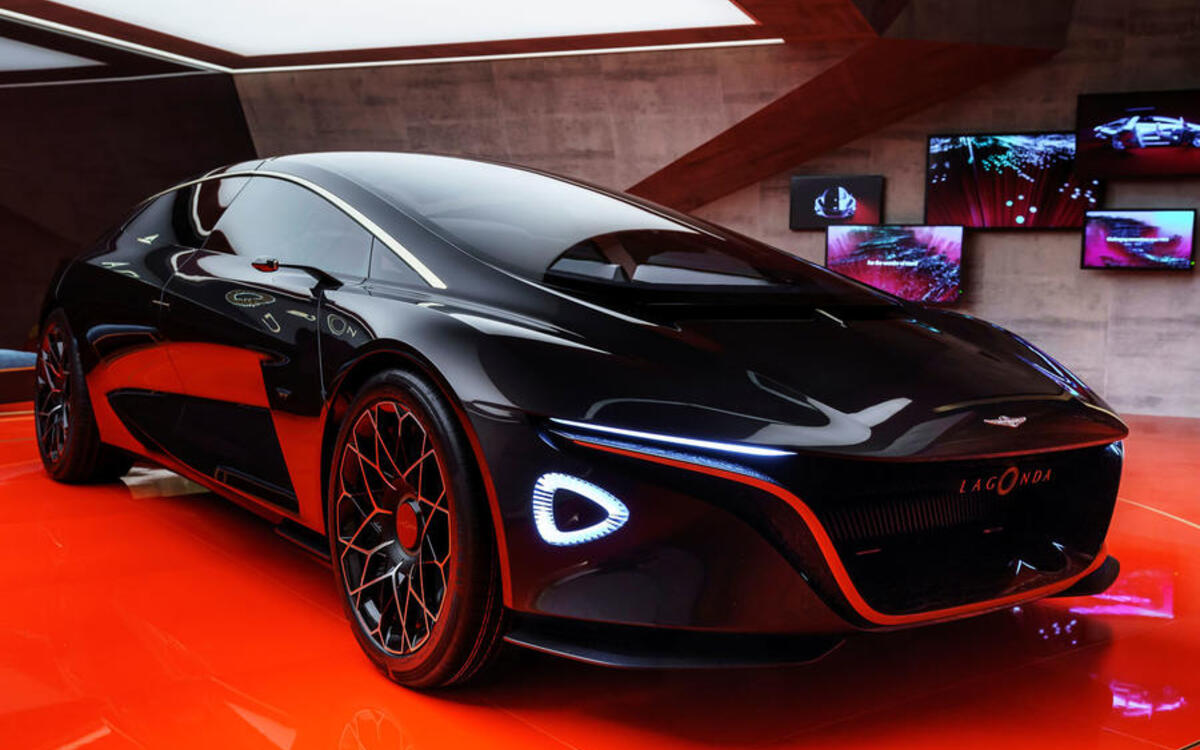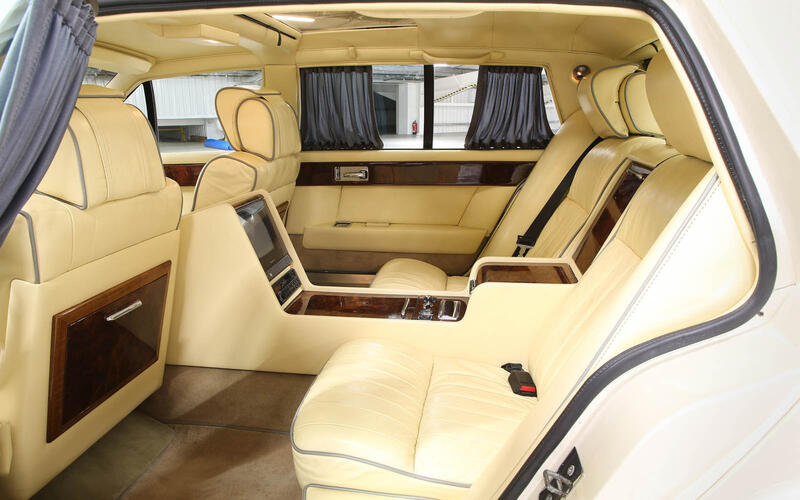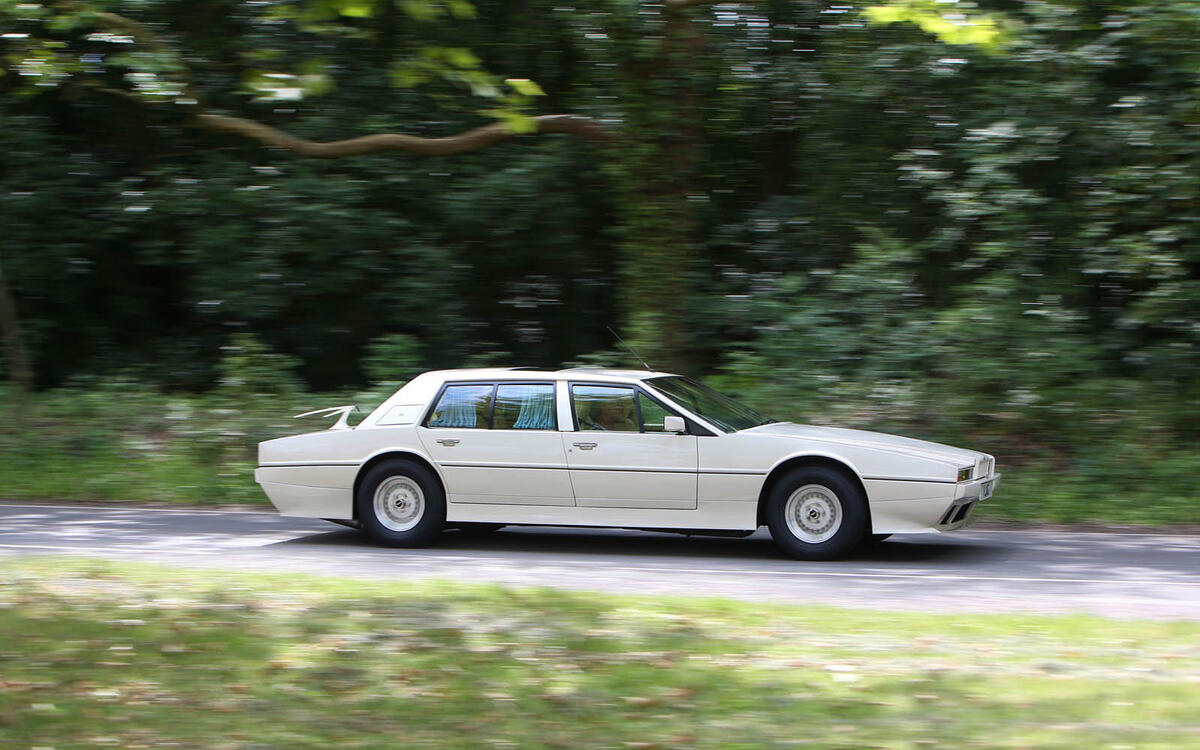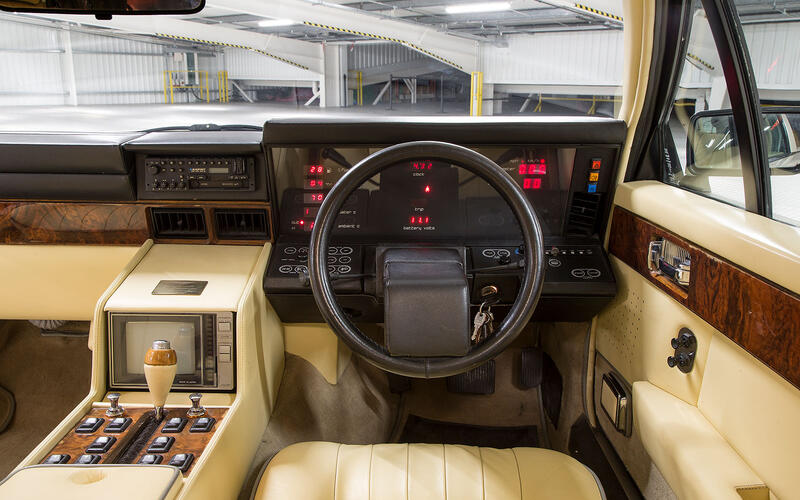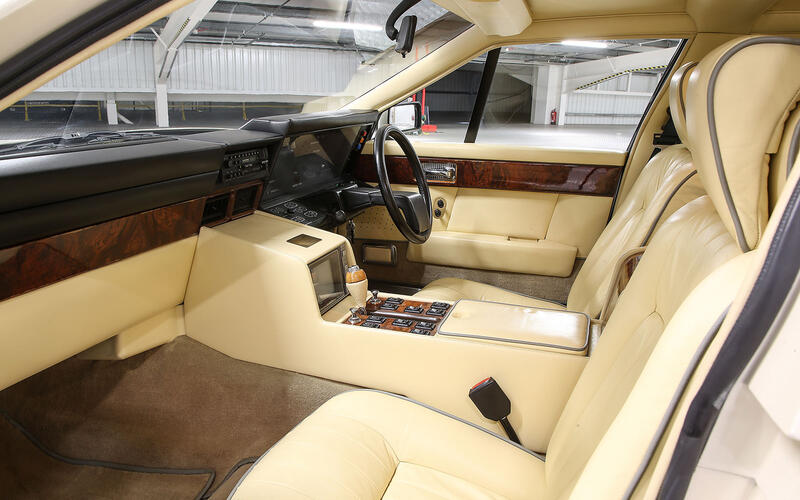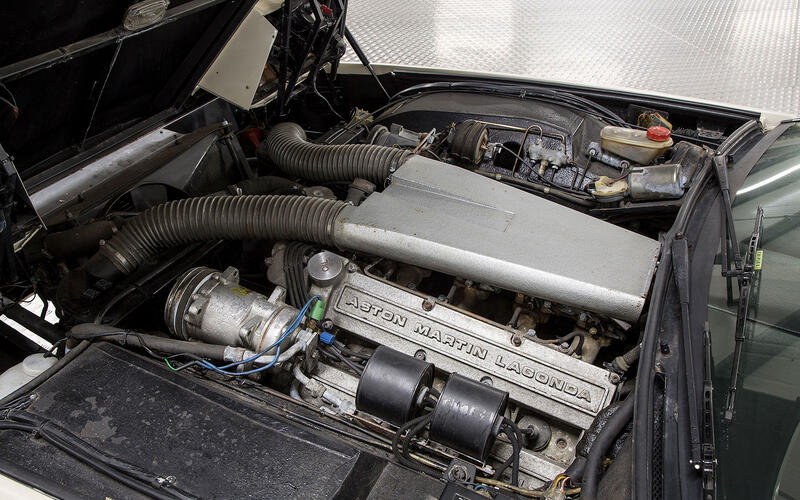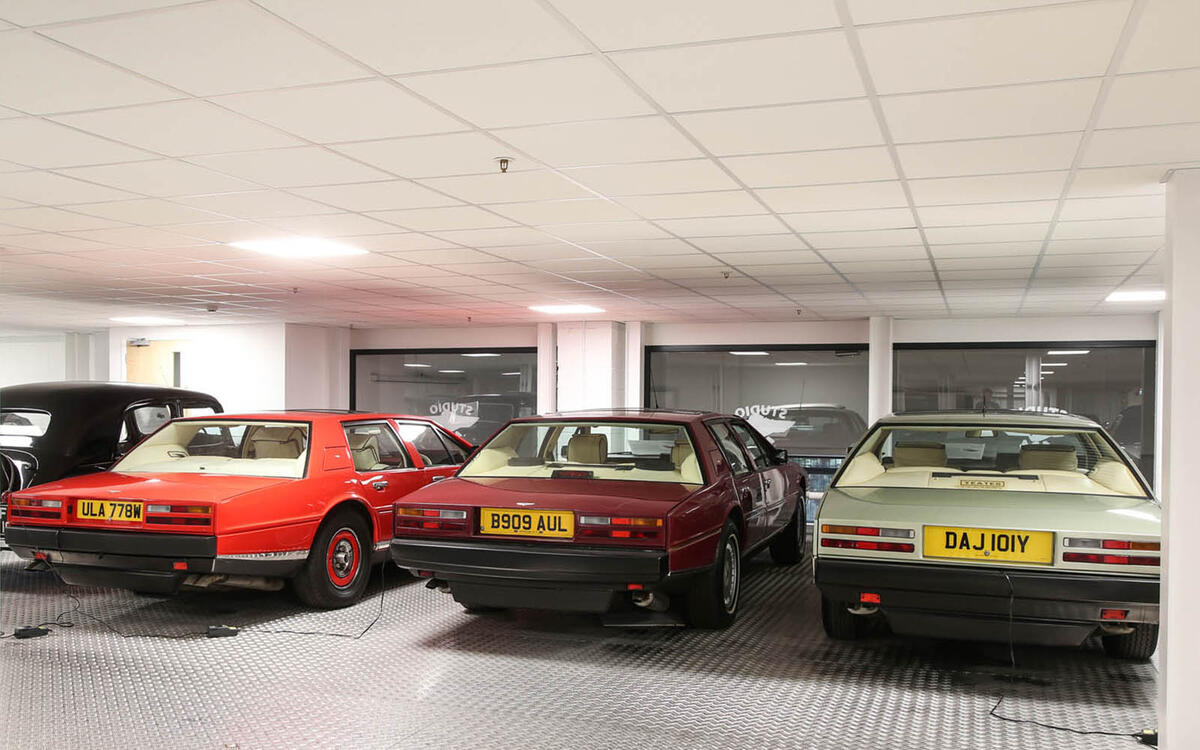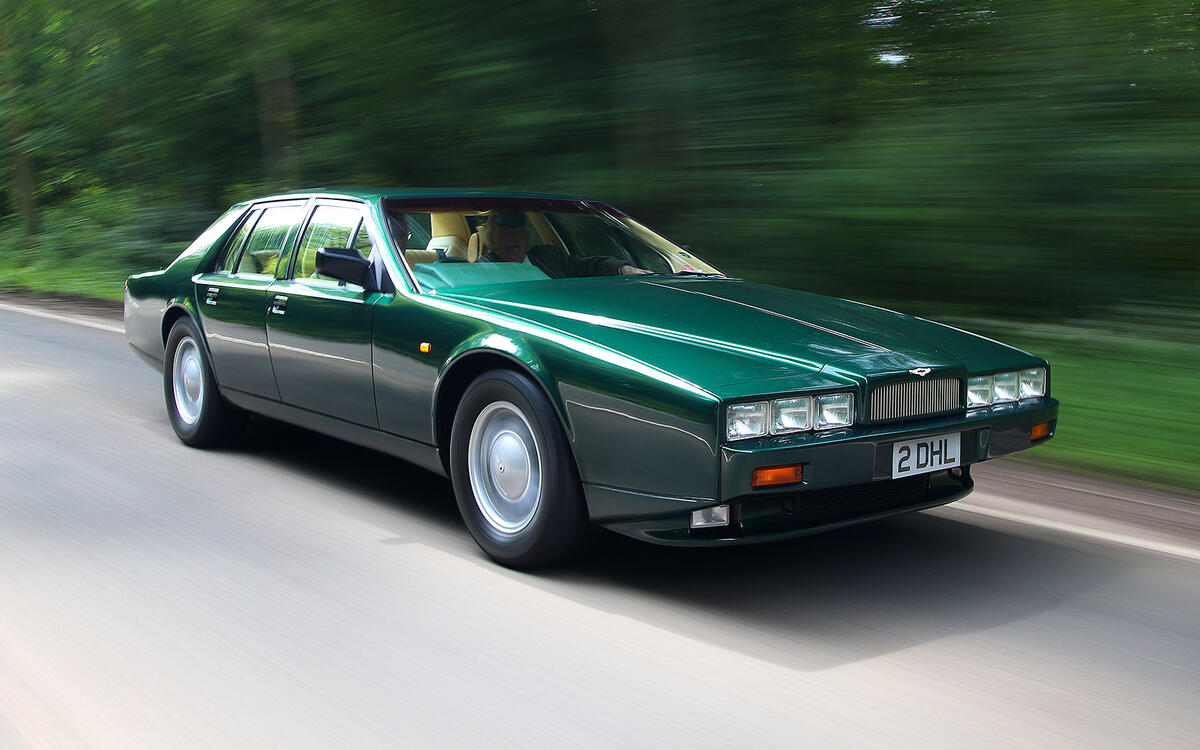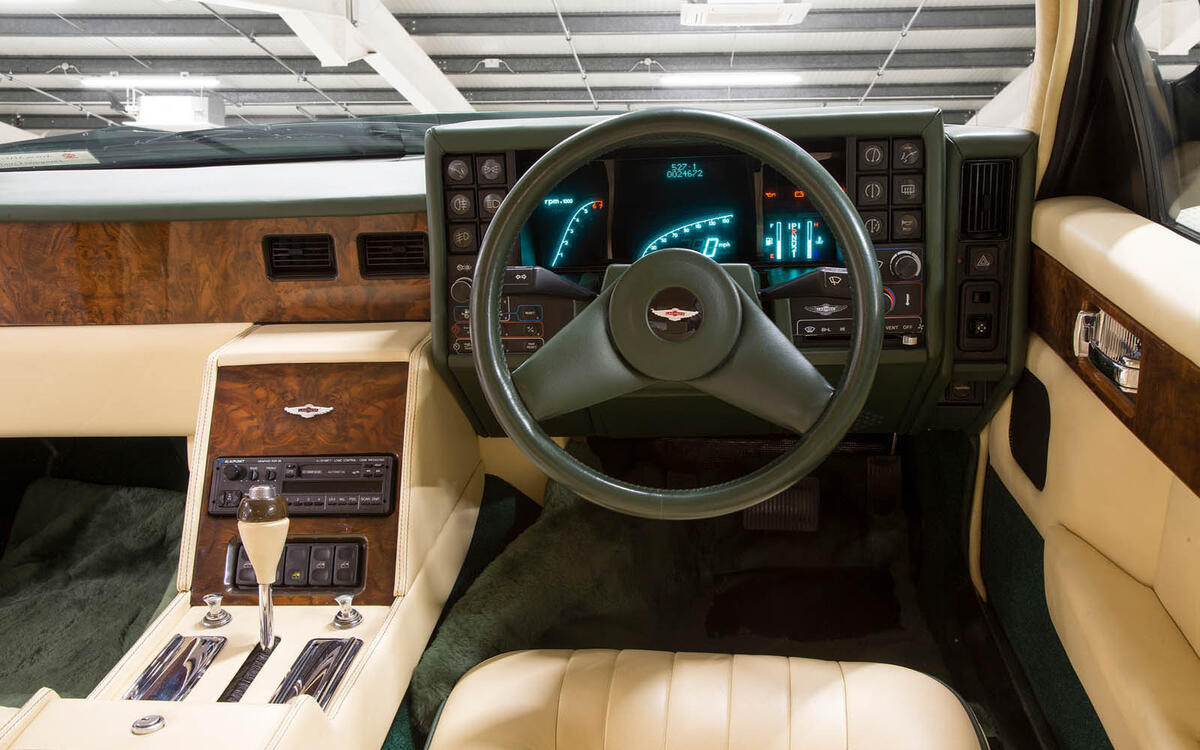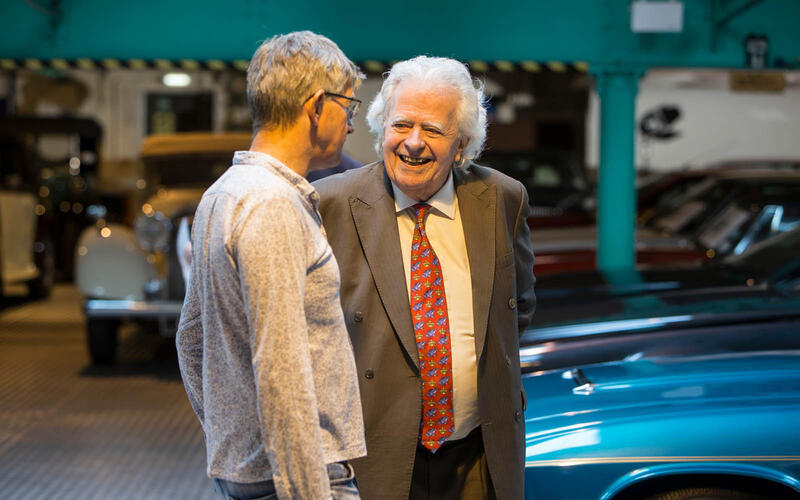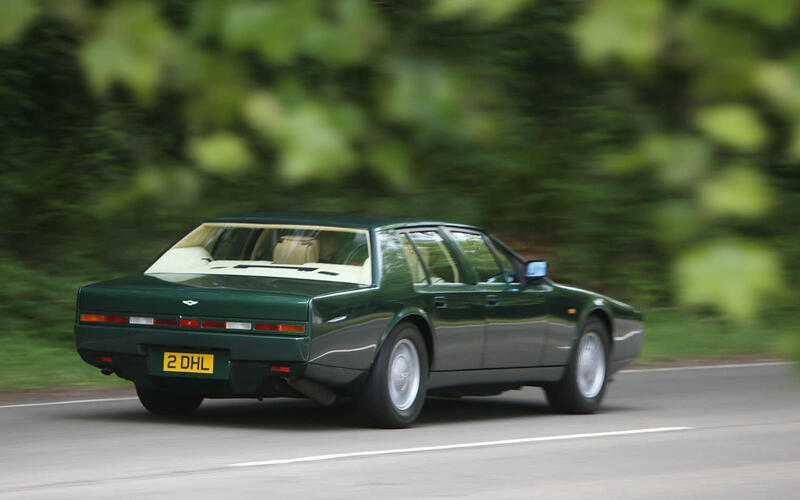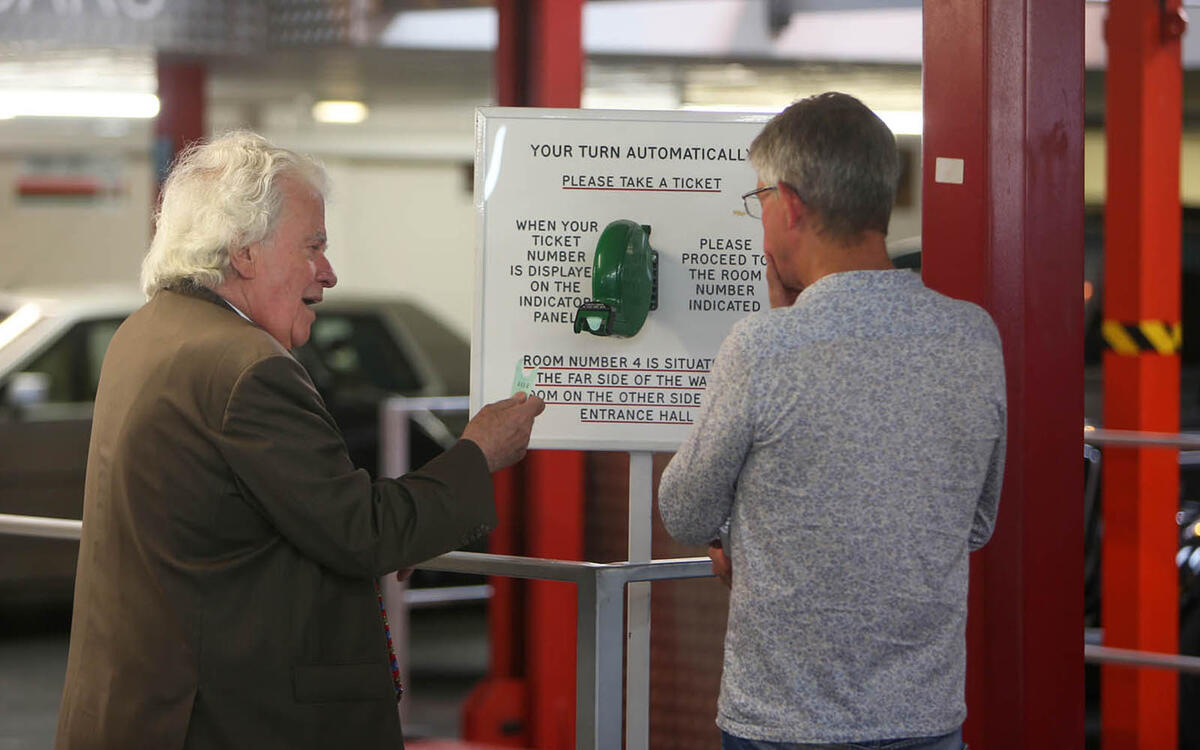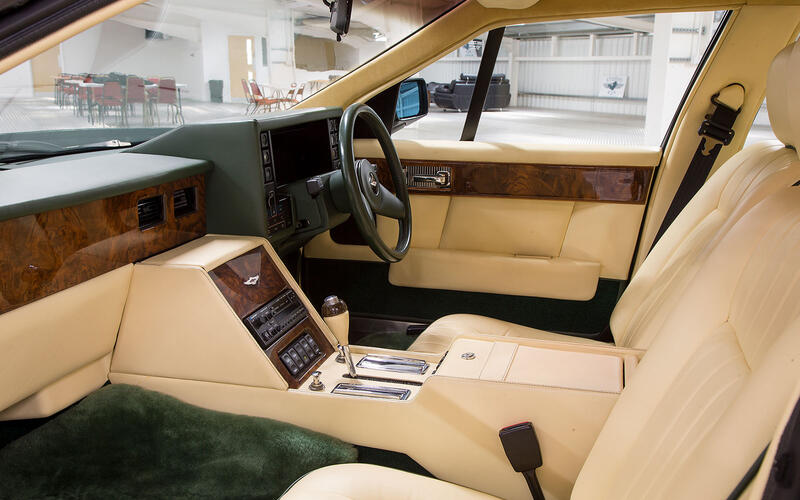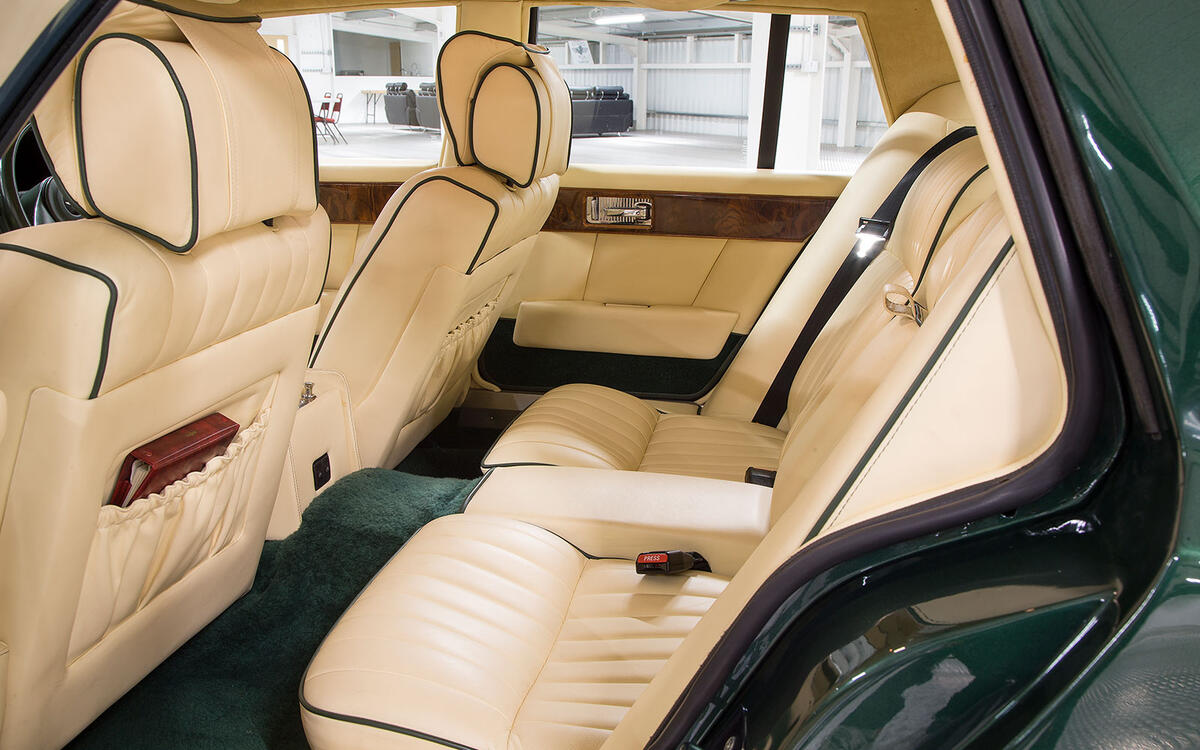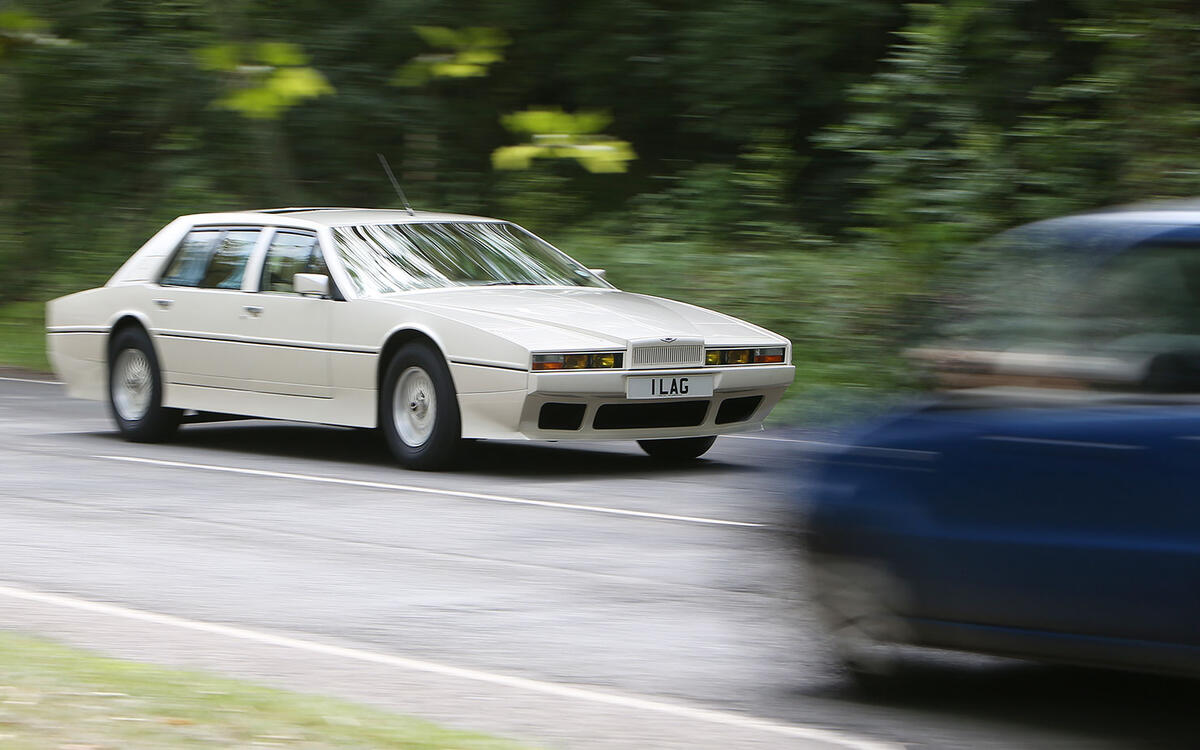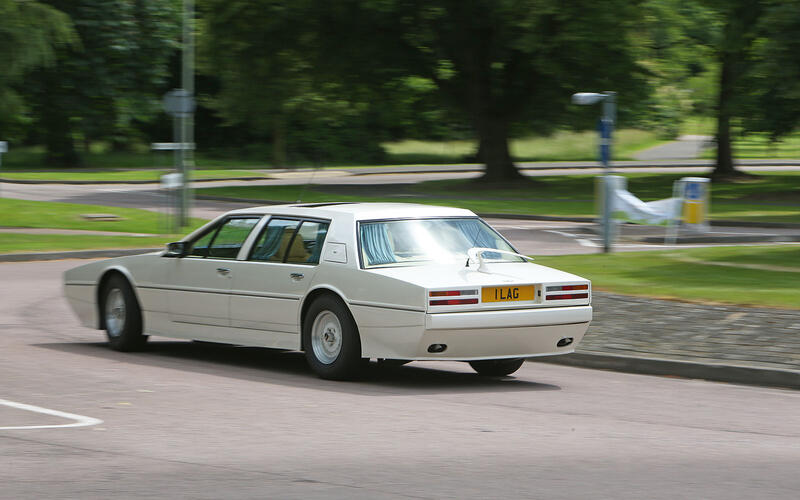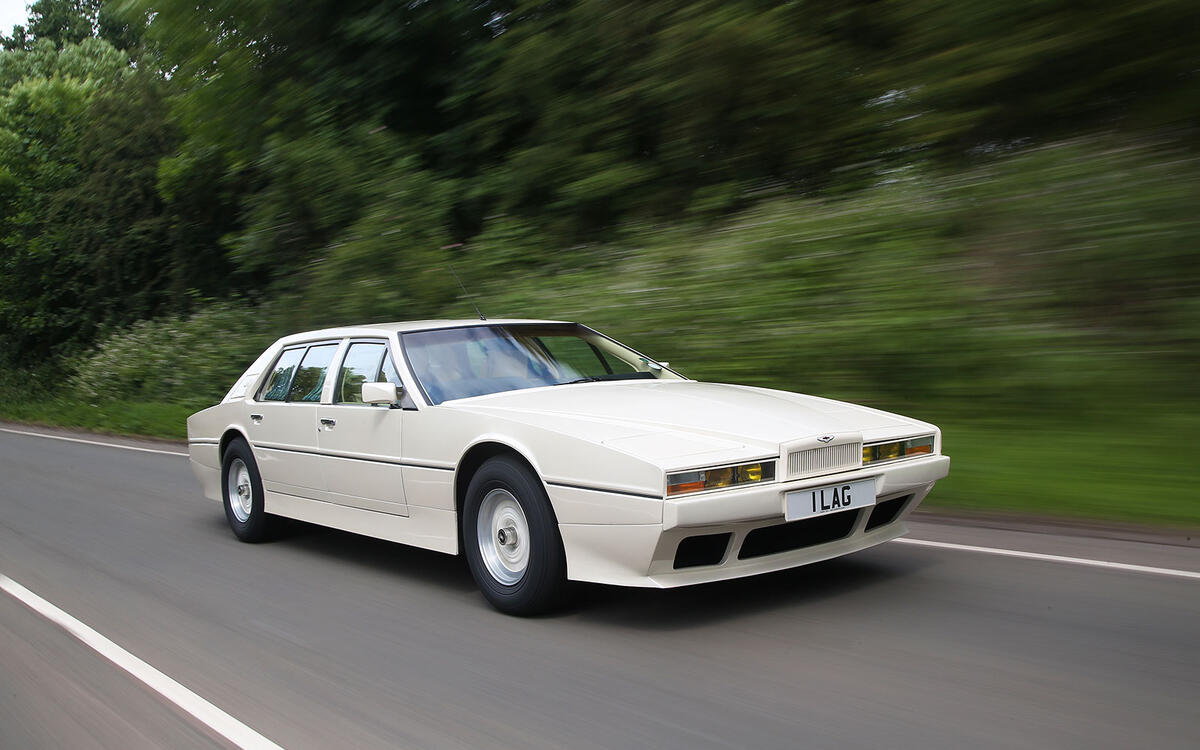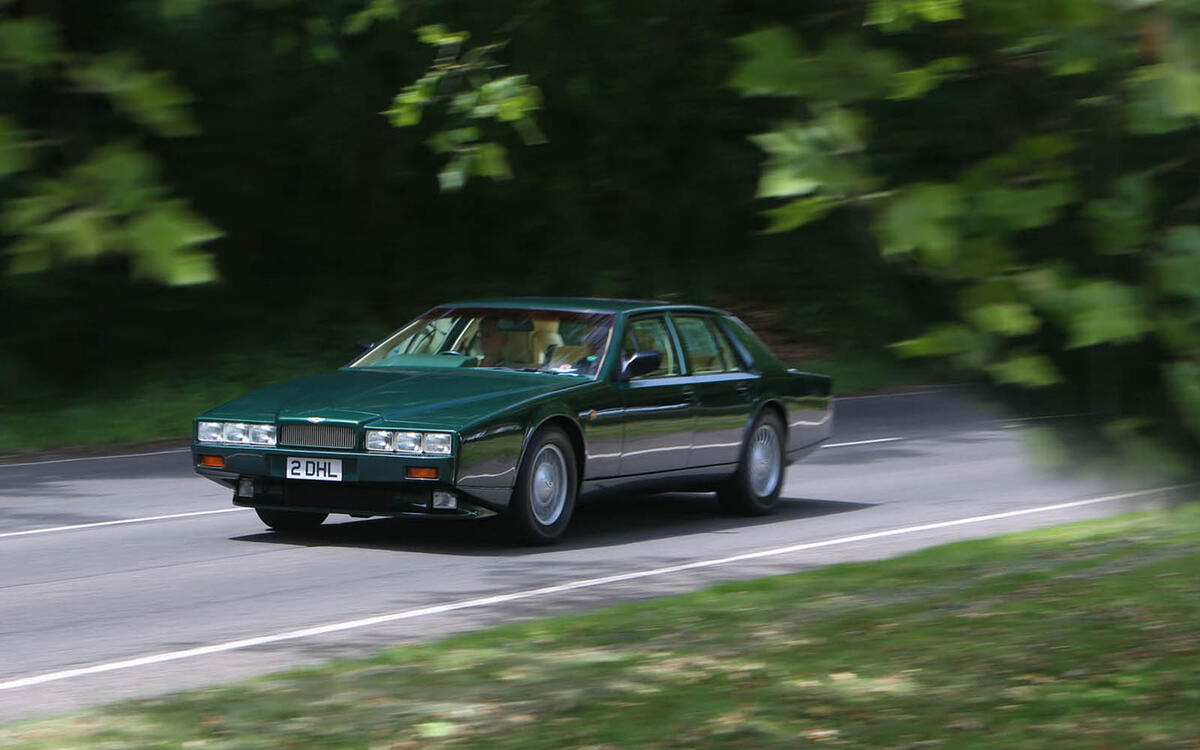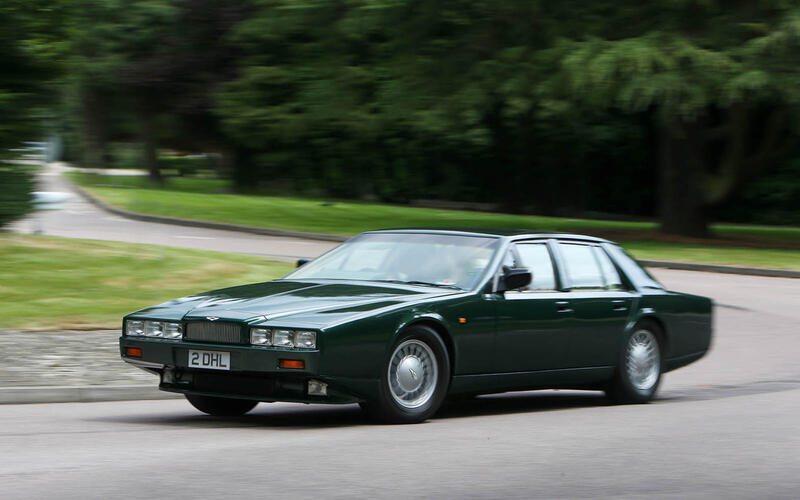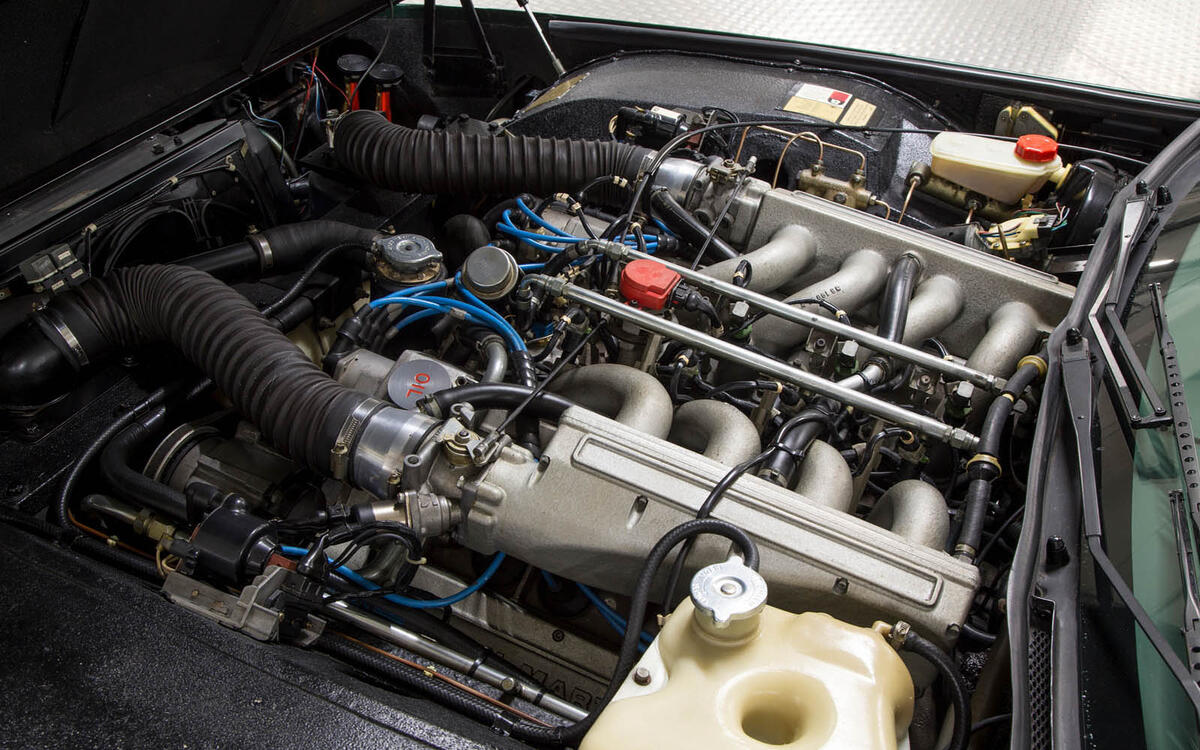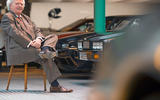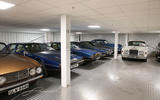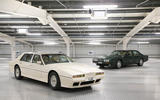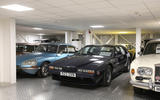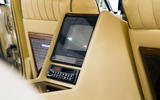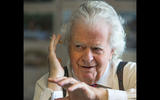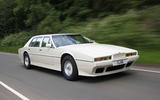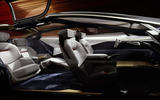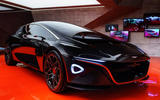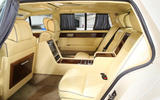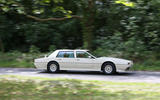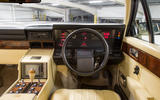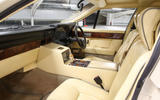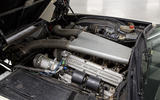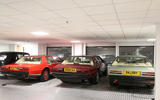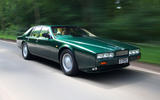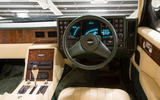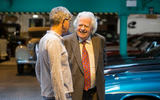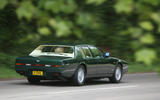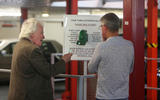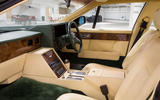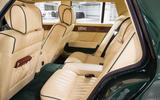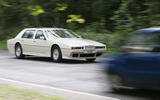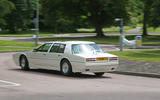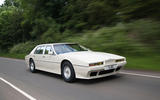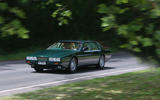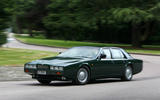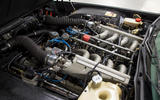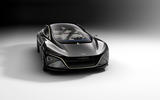 Slide of
Slide of
The man you see here owns 3.7 percent of all the Aston Martin Lagondas ever made.
That might not be so impressive if only a handful of these exceptionally long, low, sharp-edged and big-wheeled saloons had appeared, but the actual tally runs to 645 vehicles, which means that Rodger Dudding has 24.
We last met Rodger a few months ago when we had a look through his 400+ personal car collection. This time we’re just focusing on his very particular Aston Martin addiction.
 Slide of
Slide of
The numbers
Owning 24 means that he owns 192 cylinders arranged in vees, 48 fuel filler flaps (Lagondas had the convenience of two) and 24 dashboard instrument sets demonstrating a variety of late 20th century methods for digitally displaying speed, crankshaft revolutions and the state of assorted systems.
 Slide of
Slide of
Towns triumph
Were he alive today, designer William Towns (1936-93) might be surprised to discover that some of the broad ideas behind his 1976 Lagonda form part of the inspiration for the planned though now delayed relaunch of the marque.
He almost certainly didn’t expect that the car he drew in 1975 would live for 15 years and sell 645 examples. Towns probably had the idea before he sat down to create it, because the Lagonda travelled from drawing board to production reality within 10 months of the project’s start without a single sensational line being changed.
 Slide of
Slide of
Sci-fi
It absolutely was a sensation too. This was the car that the crowds wanted to see at the 1976 Earls Court Motor Show more than any other.
Marek Reichmann, Aston’s design chief today, says, ‘I remember seeing William Towns’ Lagonda and thinking it was from outer space.’ He was not alone. PICTURE: Rodger's Tickford Special (left) and Series 4
 Slide of
Slide of
Box clever
The needle-thin nose, the sharply defined glazing, the flush-fit rectangular taillights, the rectangular exhaust pipes, the space-age rake of the enormous, near-flat windscreen and the Lagonda’s low-slung length scored it unwavering stares, sometimes of bafflement, sometimes of admiration.
In the simplest terms this was a three-box saloon, a phrase that spectacularly undersold this car’s capacity to ensnare your attention.
 Slide of
Slide of
Equipment
The Lagonda’s exploration of the new extended to the interior too. The instrumentation consisted of cathode ray tube digital displays, while many of the car’s controls, automatic transmission included, were operated from touch pads.
 Slide of
Slide of
Period problems
‘They were plagued with electronic problems,’ says Dudding, who drove a Lagonda in period. ‘Never get out with the keys left in the ignition. If you take the dashboard out you’ll see festoons of wiring and circuit boards,’ he adds, his technicians managing to solve the problems.
On the four cars they’ve pulled apart so far they’ve also discovered that, ‘at either end of the dashboard there’s a little rocket ship symbol soldered on. They’re rather cute.’
 Slide of
Slide of
Lagonda
Cute but hidden, rather like Lagonda at times. The marque endured an on-off life during Aston’s custodianship, which began in 1947 when it was 41 years old. It’s most recently adorned the limited edition 2015-16 Taraf saloon, of which 120 were built.
The Taraf cost £696,000 or around US$1 million each, briefly making it the world’s most expensive saloon. The price was probably the boldest feature of the Taraf, followed by its carbonfibre body.
 Slide of
Slide of
2018 Lagonda Concept
But it certainly isn’t as bold as the Lagonda concept Aston Martin revealed at the 2018 Geneva motor show (pictured), who’s electric drivetrain allows a substantial rearranging of the car’s masses, the combustion engine and transmission replaced by twin electric motors, an inverter and an underfloor battery pack.
Despite the change of propulsion and emphasis on spacious high luxury, the ghost of the William Towns Lagonda can still be seen, as it can in the Taraf, through the shape of the rear pillars, the wedge of the nose and the opulent wheelbase.
 Slide of
Slide of
2018 Lagonda Concept
There’s a tenuous, electrical link between the 1976 car and Lagonda’s promised saloon and SUV too. The older car pioneered digital instrumentation and touch pad switches not only for Aston but the entire industry. Features like this are common today but almost undreamed of 42 years ago.
The Taraf’s successors will certainly pioneer full electrification for Aston Martin Lagonda, if not the wider market; but the most important element to link 1976 Lagondas and tomorrow’s will be the mix of luxury and technology.
 Slide of
Slide of
Tickford Special
Step aboard Dudding’s white and inescapably vulgar extended wheelbase Tickford Lagonda – one of only four built – and you certainly see the scope for combining the two in this Middle East market car that has TVs front and rear, and a cascade of walnut between the rear seats containing leather-lined shelves for cassettes and videos, with players of both formats on board.
 Slide of
Slide of
Dubai dreamer
The bootlid carries a body-colour boomerang antenna, the extended rear doors and the back window are curtained and the BBS alloys are part-finished in the white of the Lagonda’s unmissably long body. It’s pure Dubai.
 Slide of
Slide of
Dashing dash
This 1984 car also has the digital cathode ray dashboard and touchpad controls, and it all seems to work. On the move you soon discover that the digital rev-counter’s numbers jump around as if failing, until you realize that they’re chasing the crank speed to the nearest rev.
 Slide of
Slide of
Tech
The speedo scatters less, its units of measure larger than the rev counter’s, but neither is easy to see behind the right hand side of the screen, where they’re less easily eclipsed by the small wheel and your hands. But none of this matters.
The sight is fascinating, as are the delicate, blister-like touchpads, which click on and off more emphatically than expected. You find yourself marveling that tiny Aston Martin managed to get all this into production at all.
 Slide of
Slide of
Anglo-American
The Lagonda’s mechanicals are more familiar, being much the same as the Aston V8’s. There was less power for this limo – 280bhp rather than 320bhp – and a Chrysler three-speed auto was standard, though the V8’s chassis provided a drive more sporting than implied by all that length.
Most obvious are the firmly controlled ride, surprisingly direct steering and better still, not much roll. If you don’t mind thirsty sinkings of the accelerator, this is a car you can get about in pretty quickly.
 Slide of
Slide of
Parking
Parking will be less speedy. The Lagonda’s manouevrability is limited by its dismal turning circle, rangy wheelbase and the difficulty of seeing its extremities. Dudding says that he once got stuck in a multi-storey, the spiraling coils of its in-ramp too tight for the Lagonda. He had to reverse out - as did the ten cars behind him.
 Slide of
Slide of
Lagonda Series 4
Dudding’s later green Series 4 car feels as off-puttingly oversized as the extended wheelbase Tickford in a tight space, and at low to middling speeds not a lot more athletic, either.
 Slide of
Slide of
Lagonda Series 4: Interior
It’s more convincingly assembled – this particular car is the fourth from last – and has a more readable dashboard, its digital instrument pack coming from mid-80s Vauxhalls. It’s clearer and less experimental-looking, but slightly less intriguing too.
 Slide of
Slide of
Power
The engines of both cars are surprisingly intrusive even at low speeds, the V8’s valvegear giving the sound system plenty to compete with.
Fish for power and you’ll hear the bass surge of the V8, and feel the springy clunk of the transmission engaging top. It’s crude, but interesting, the Lagonda is unquestionably a car that you’ll enjoy getting to know. Dudding certainly does.
 Slide of
Slide of
Brave new world
‘I met William Towns. What I liked was the originality of his thinking – it was such a bold step,’ he says. So does Aston Martin's Reichmann. ‘Towns wanted to change the norm. It’s still dramatic and controversial today, and remembered well. Controversy is not always bad. Brave is the word, but then we say brave new world.’
 Slide of
Slide of
Wealth
Rodger Dudding earned much of his fortune from popularising a simple idea: the numbered ticket machine, enabling busy retailers to easily serve customers in the fairest way - first come, first served. He later acquired a large estate of lock-up garages - he now owns 14,000 of them - which he rents out to all and sundry.
This gave him the financial firepower to indulge his love of cars. He now owns 425 of them, all stored in two building just north of London. One is a former tram-shed, the other is purpose-built and doubles as a film studio. There's no particular theme to his collection: "They tend to be British, anything from the 1900s to the present." Among the non-British cars he owns is an Audi Cabriolet, formerly owned by Princess Diana.
Take a look at our remaining photos from his Aston Martin collection in the rest of this gallery.
 Slide of
Slide of
Front cockpit of the Series 4
 Slide of
Slide of
Passenger compartment of the Series 4
 Slide of
Slide of
This Tickford Special, one of only four ever made, certainly stands out among other traffic
 Slide of
Slide of
The rear TV antenna adds to the striking looks
 Slide of
Slide of
Tickford Special on the road
 Slide of
Slide of
The final series 4 Lagonda was the most refined of the breed
 Slide of
Slide of
Styling tweaks made it less dramatic than the Series 1
 Slide of
Slide of
Series 4 Lagonda Engine Bay
 Slide of
Slide of
The Aston Martin Lagonda Vision Concept that relaunched Lagonda
Originally scheduled for 2022, this car probably won’t now arrive until 2025 or so, delayed by Aston Martin’s financial challenges.
A closer look at Rodger Dudding's amazing car collection
Advertisement


